This is a comparison and review chart based on 12 years of paddling surf skis with GPS recorded time trials with all the 25 skis listed on the chart over the same four courses since 2002 as explained below. I added 10 new skis to the comparison chart since last time I updated it. Before I started paddling surf skis in 2002, I was an advanced sea kayaker certified by the ACA and BCU. In 2002 I began paddling surf skis (XT), and then in the summer of 2002 I bought my Huki S1X and my quest for the perfect ski began. My search like most of yours, is a dynamic search. Paddling and racing surf skis in ocean conditions requires competency in five key areas: balancing skills, paddling technique, cardio, strength, and seamanship along with a proper fitting bucket so you can put all this together.
With more bucket time, these areas improve often at different rates. So trying to match the most appropriate ski for these skill areas has been a fun pursuit. While my skill set has evolved over time, so have the surf skis over the years. The choice of surf skis today is vastly different from 2002. Now there is a surf ski that matches your skill set no matter where you are on the learning curve. This chart helps you with that. When I started out, there was no place for good information on surf skis and certainly no one had compared this many skis and ranked them for everyone to see. This site since 2009, has helped many surf ski paddlers make a more informed decision about their purchase of a surf ski(s) or at the minimum stimulated questions to be asking yourself when purchasing a ski.
As a 54 year old, 5ft 9in, 178, who paddles 3-5 days a week all year around, I have owned,paddled,raced all the skis listed on the chart for at least two months and as long as four years with the exception of the Uno Max Ultimate that I purchased a few weeks ago at the time of this posting. Like most of you reading the chart, I paid fair market value for all my skis except for my Stellars that I bought at cost while I worked for them from 2009 to August of 2013. I have logged all my training paddles and races and have extensive data over the same measured courses (GPS). I paddle primarily on the Sakonnet River, Narragansett Bay, Rhode Island Sound and the majority of the races in New England. My four main measured time trial courses are my 3.2 mile course, 6.4 mile course, 11.6 mile course (Sakonnet River Race), and 6 mile course, which are all on different segments of the Sakonett River with some over lap.
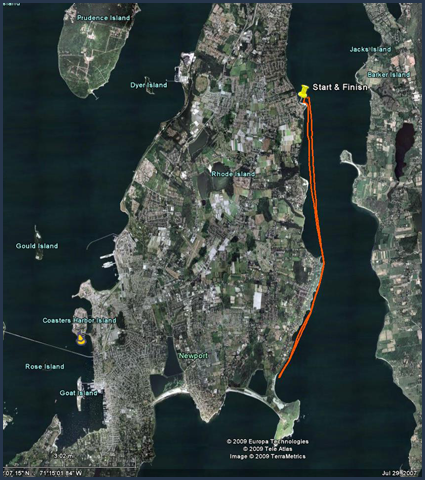
Sakonnet River. This is also the race course of the Sakonnet River Race. If you head North, that is my 6 mile flatter time trial course.
Where I live is a perfect place not only to paddle surf skis, but to review skis since I have access to many different types of water from flat, to bay, to ocean, all within minutes of my house. The Sakonnet River is a misnomer. It really is a 2-3 mile wide channel stretching 11 miles while getting wider and wider as it opens into Rhode Island Sound. On the other end, it narrows to one mile across as it connects to Mount Hope Bay. Different sections of the Sakonnet offer varying conditions from flat to refractory waves, to some excellent 1-3 ft nicely formed waves. Since 2003 I have also raced and paddled with the same group of New England racers and training partners and can chart my race times compared to them in the various skis. This offers another excellent point of reference beside the GPS time trial data. Another benefit that I have over some paddlers is that I am sensitive to the nuances of skis and think about them often. Since I have anywhere from 6-10 skis in my garage at any point, I go back and forth between on a regular basis depending on the conditions, training partners, and my energy level. I also make a point to try other skis at races that I have not tried or owned. With so many connections across the United States and the world, I often ask competent paddlers their opinion of the many skis we have in common.
Like any review or comparison, your experience may be different for a myriad of reasons: brand loyalty, skill level, improper fit, unavailable ocean conditions, limited point of reference, weight of your ski, your body weight, different rudders, improper technique, improper paddling position, limited time in a particular ski, or this was simply not your experience. We all have biases, and I am no different, but I have tried to minimize mine or at least disclosed them in reviewing the skis over the years.
So at this point in my paddling career, I am fairly competent in the 5 key areas, balance, paddling technique, cardio, strength, and seamanship and I certainly know what a proper fitting bucket is. So for some years now, optimizing the boat(s) for my skill level with a particular race, has been a top priority for me. In other articles I have laid out the 12 or 13 questions you need to ask yourself when buying a ski. At the top of the list is “What is your Goal?” My goal is performing well in the races. If you look at any of the race standings, my group of racers, is only separated by two minutes or less at any give race. So boat choice makes a difference in the race standings. Once you have maximized all the key areas of surf ski paddling or at least progressed as much as you can based on your particular circumstances, then boat choice makes a difference.
Observations on the Chart.
I chose to rate the skis 1-6 in the different categories vice 1-10 because using 1-10 scale would magnify the differences between the boats too greatly. Where you see 1G or 2G next to some skis, that means 1st Generation or 2nd Generation of that model of ski. We sorted the data in the table based on Overall Speed and added another category Cockpit Ergonomics.
There is one notable outlier on the chart and that is the Ted Van Dusen, Mohican. The Mohican is a nuanced ski for pure flat water paddling. If the chop or waves are over 8 inches than you are better off paddling a light weight high performance ski with a small rudder. While the Mohican is rated the same 6.2 as the V14 in flatwater, the Mohican is not designed the ocean so that brings its overall score down. The speed of the Mohican is comparable to the V14 with much,much greater initial stability but has very limited secondary stability. I included it on the chart since many paddlers asked me to include it. It remains my favorite ski for pure flat water.
Some skis are clearly more stable, faster, and comfortable than others. Some perform better in downwind conditions while others perform better in the flats. Having said that, over the past four years, surf skis have improved greatly in virtually in every facet from design, to build quality, to comfort, to better combinations of speed and stability. In viewing the chart keep in mind each paddler may place a different emphasis or weighting on each of the categories. If your goal is racing, then you obviously are looking for more speed. If you paddle primarily in ocean conditions than you may prefer a more stable ski so an emphasis is on stability vice speed. If you paddled in the San Francisco you may put an emphasis on steering and stability since the water is faster and bigger than here on the East Coast. These are just a few examples.
Also pay attention to the weights of the skis. The lighter the ski, the faster it is, end of story; provided you have to balance skills to paddle a lighter ski. Just as a point of reference, the difference between a ski that is rated as a 6 for overall speed and one that is rated a 5.8 is very significant, probably around 5-8 seconds per mile. So in a six mile race that could be as much as 48 seconds, the difference between first place and a fourth place finish in my races. We are all products of the water we train in. While in New England we don’t have the swift, bigger water that they have in San Francisco, but we have a lot of chop, wind driven, messy stuff and many variations ranging from flat to 4 foot seas. My point as it relates to reviewing skis, is that most boats but not all, have the similar handling characteristics rather in 2ft seas or 4ft seas. These differences often become magnified as the conditions get bigger. For example is a particular model of ski is slow to turn in 2ft seas, then in 4ft seas it will be even slower. This a general rule of thumb. There are a few skis that don’t meet this rule. A good example of this for me was the V10L. It handled nicely in flat to 2ft regular seas but once the conditions became bigger and more irregular than it became noticably unpredictable and less stable.
There is no easy perfect way to compare skis with so many variables. That obviously has not stopped me. I am not searching for perfection, just on water, real experience, in the conditions that are available to me with my GPS, Heart Rate monitor, time trial data, training partners, race partners, races, mix conditions, and a sensitivity for the performance of skis. I have been in pharmaceutical sales for over 20 years so comparing pharmaceuticals by weighing the risk/benefits comes easy and reviewing skis is similar for me. I am also fortunate that I can fit in virtually every ski comfortably so I am not restricted by bucket size as some paddlers are.
Show Me The Data: The numbers are from July 2002 to December 2013.
I have logged the below stats for my 4 main time trial courses, hours rounded off:
- 3.2 mile course, 174 times accumulating 408 miles in 61 hours
- 6 mile course, 154 times accumulating 871 miles in 140 hours
- 6.4 mile course, 291 times accumulating 1677 miles in 275 hours
- 11.6 mile course, 105 times accumulating 996 miles in 165 hours
Click to See Detailed Comparison Page with additional Charts and Tables
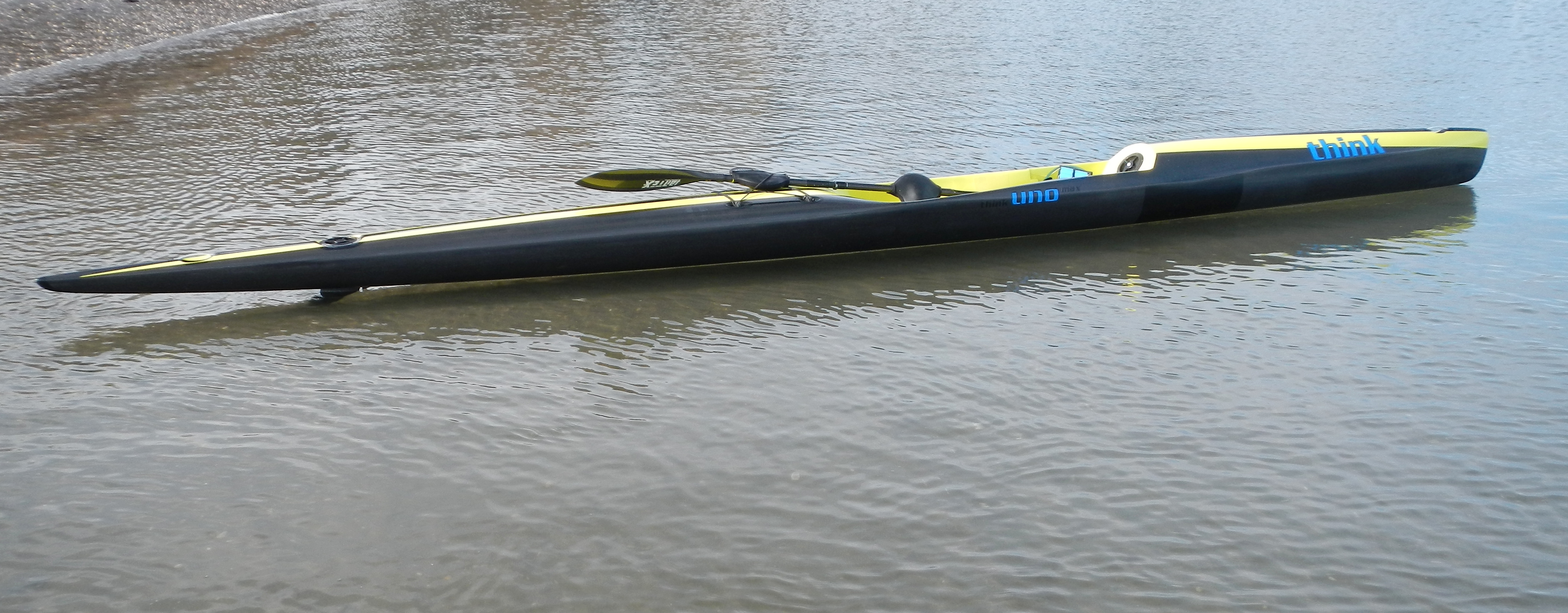
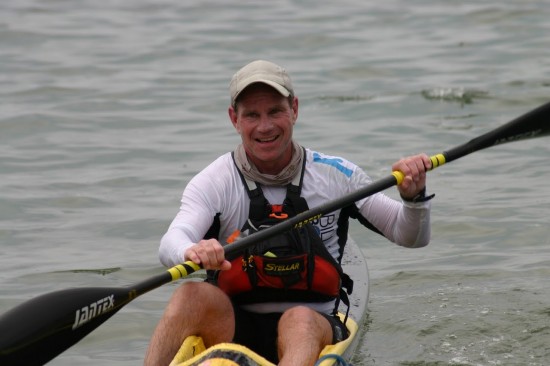
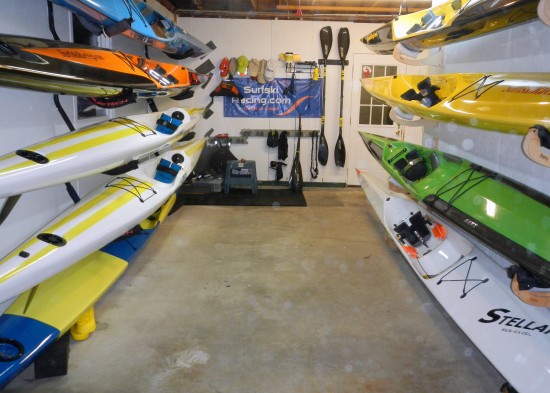
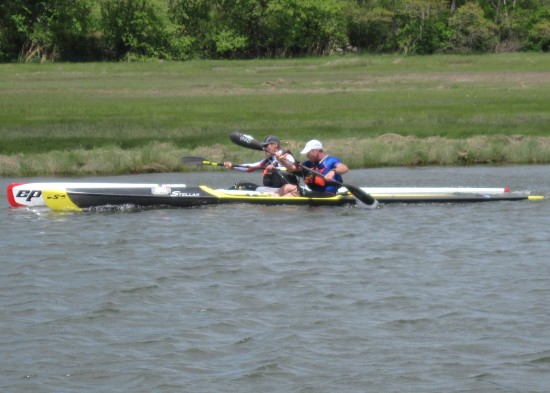
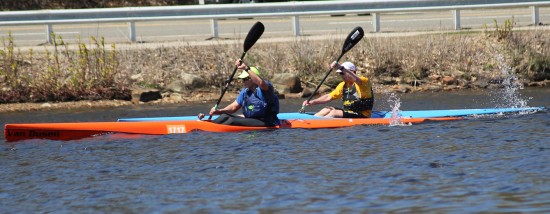
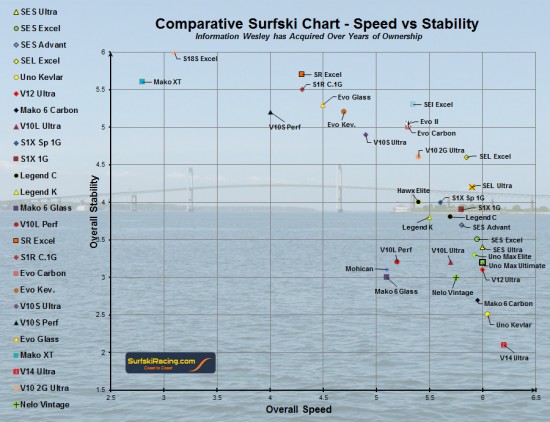
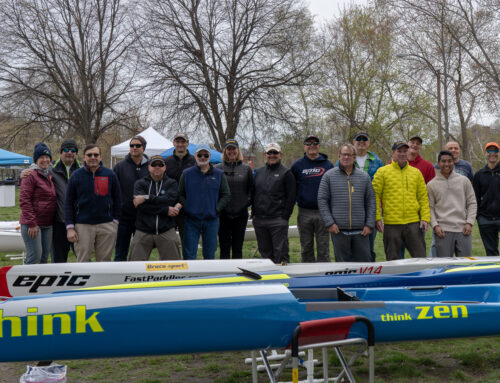
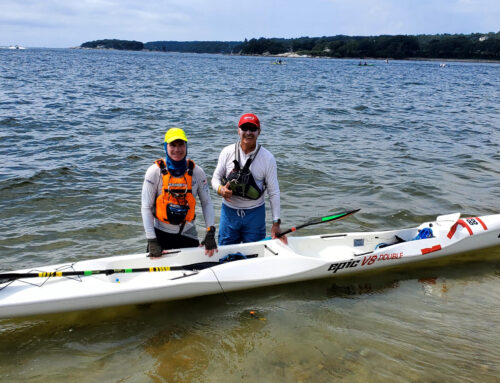
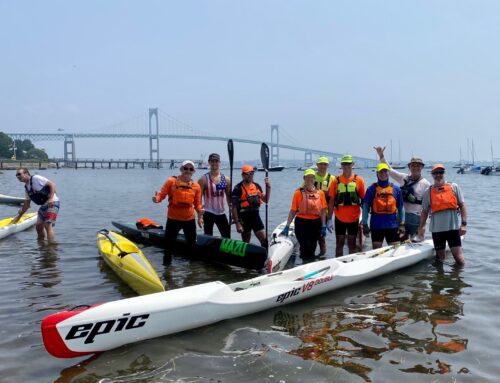
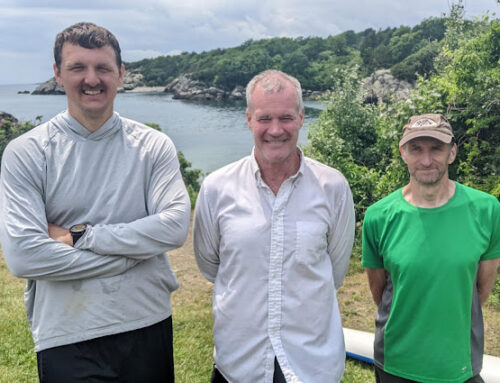
Leave A Comment
You must be logged in to post a comment.